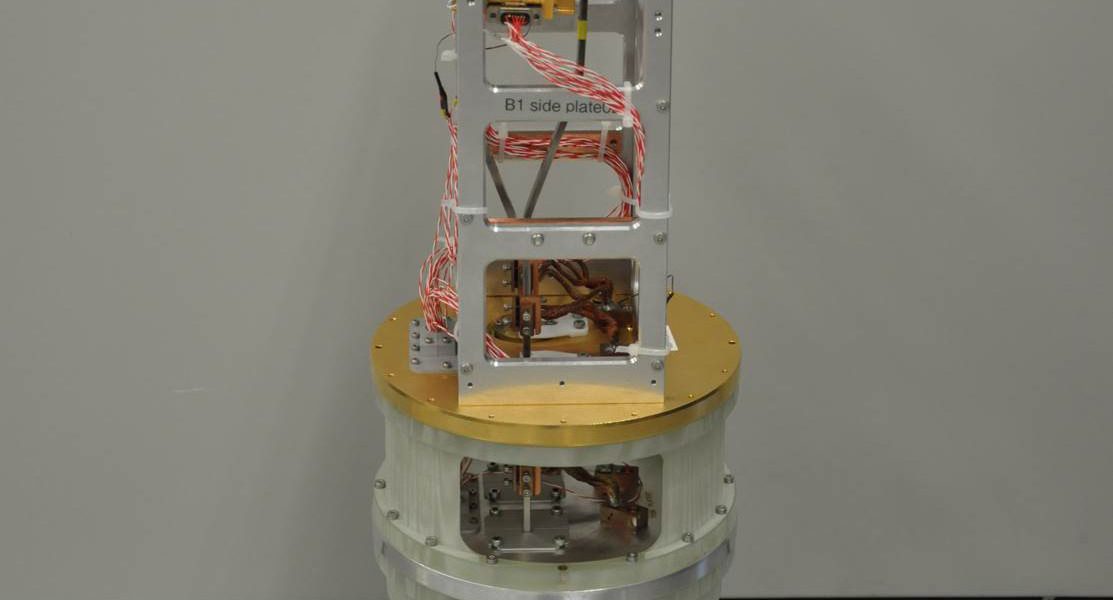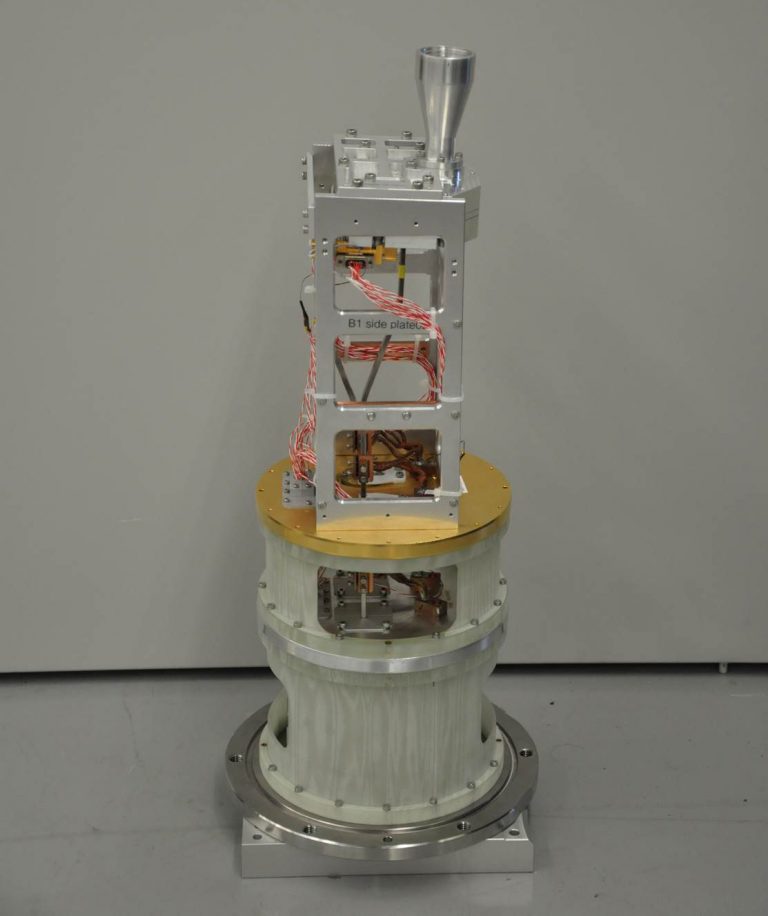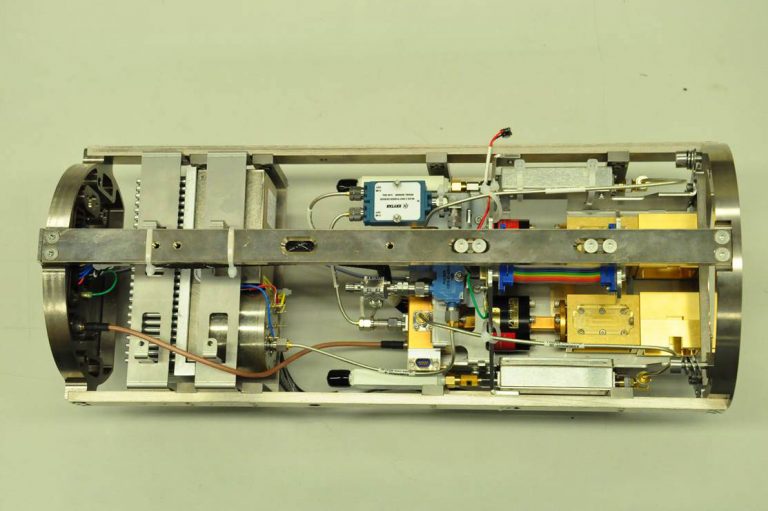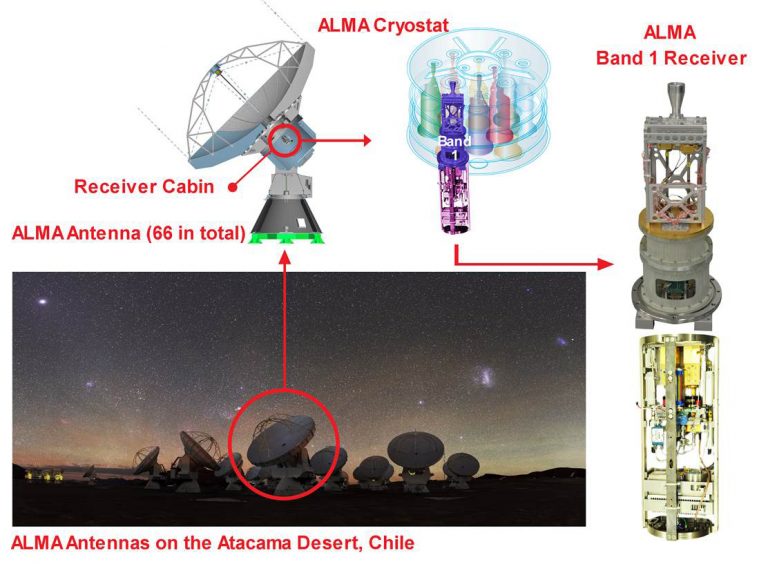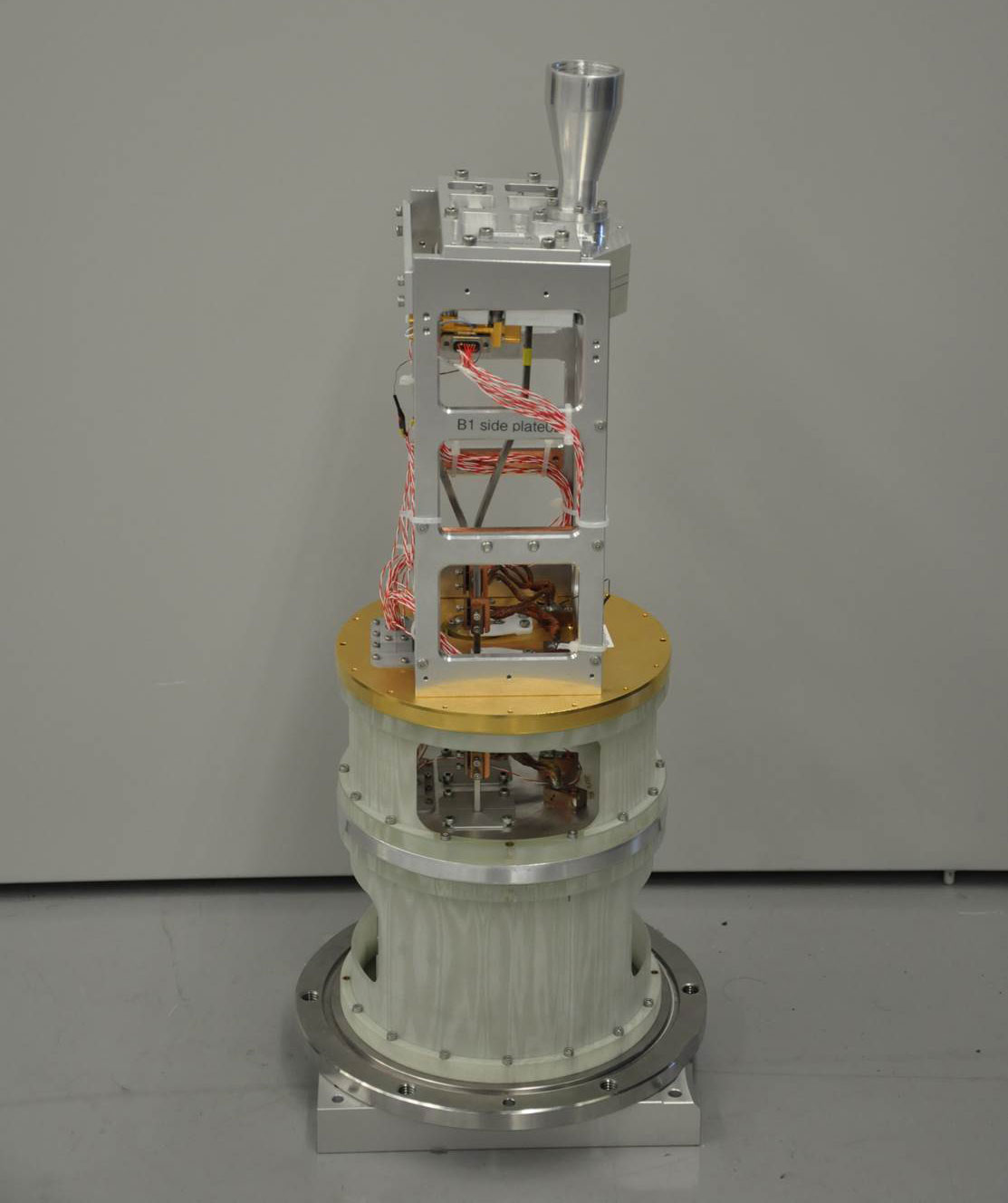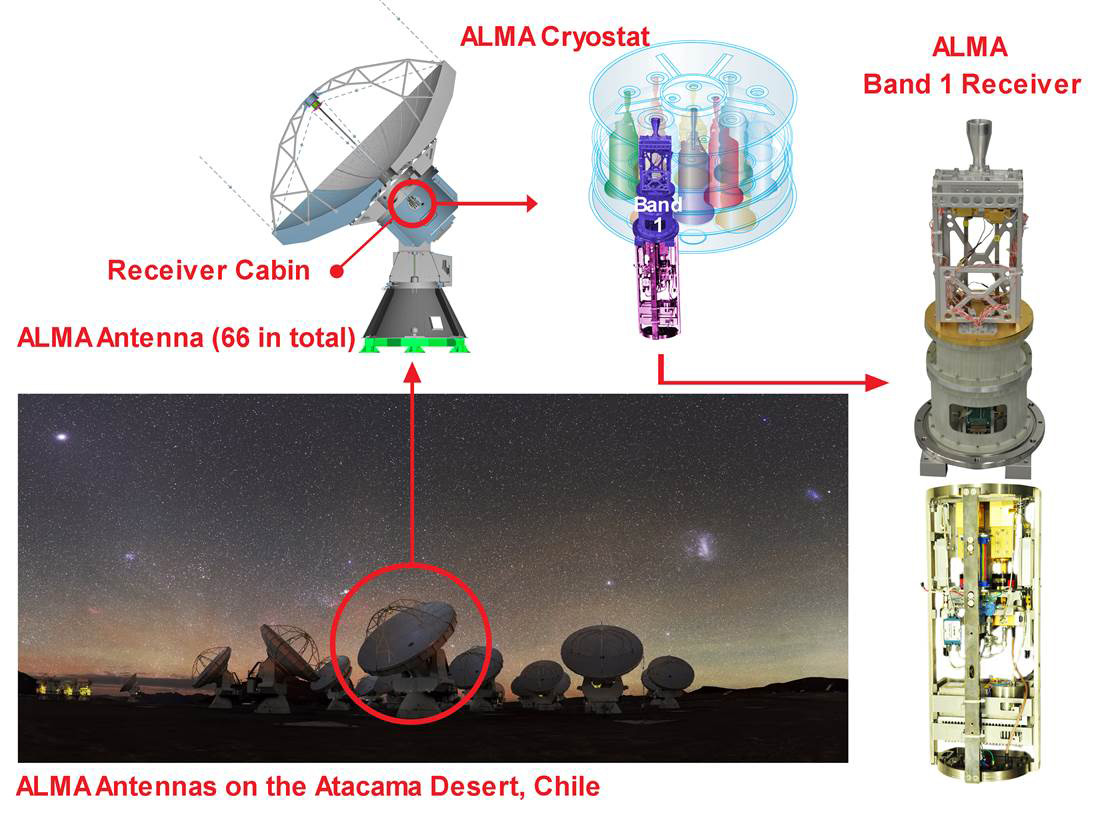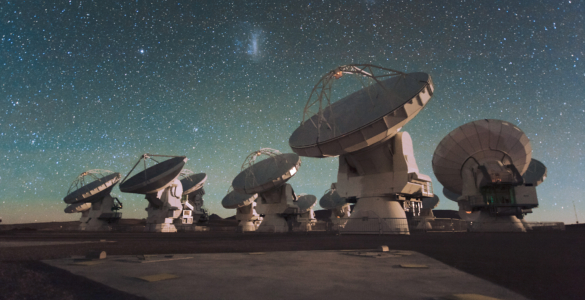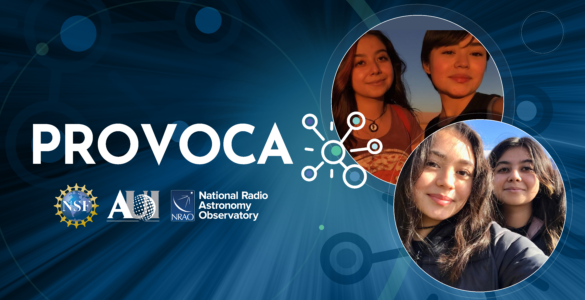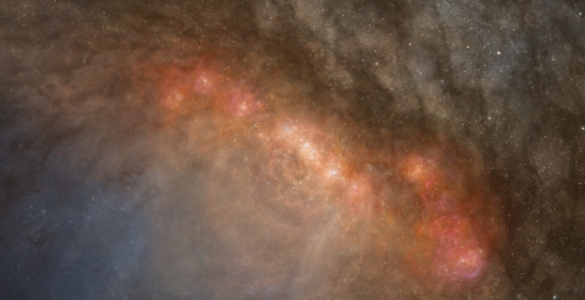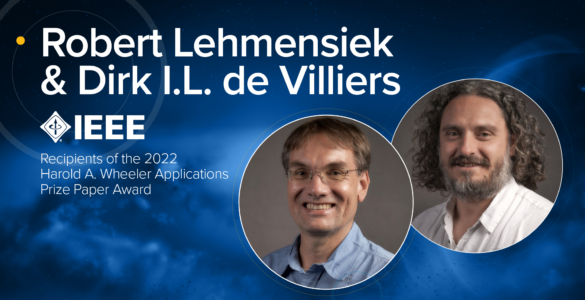The ALMA Board has officially approved production of the Band 1 receivers for the Atacama Large Millimeter/submillimeter Array.
These new receivers, which were developed by an international team of scientists and engineers, will enable ALMA to observe much longer radio wavelengths than it currently studies.
This new capability will give ALMA unprecedented views of the most distant and earliest star-forming gas reservoirs in the Universe as well as the capacity to study the growth of millimeter-size dust grains into centimeter-size pebbles around nearby stars, shedding light on the first steps of planet formation.
The ALMA antennas were designed to accommodate up to ten different receivers, each covering a specific range, or band, of the electromagnetic spectrum. To date, seven receivers have been developed and installed in each of the ALMA antennas.
The addition of Band 1, which will cover a range of wavelengths from 6 to 8.5 millimeters (frequencies from 35 to 52 gigahertz), will enable ALMA to detect cool carbon monoxide molecules – an important tracer of star formation — in much more distant objects than it can today.
Completing the planned frequency coverage for ALMA are the Band 5 receivers, which will observe from about 1.4 to 1.8 millimeters (163 to 211 gigahertz). They currently are being constructed and will be integrated into the ALMA antennas as they arrive. Band 2, which will observe in the 4 millimeter wavelength region (67 to 90 gigahertz), is planned for the future.
The Band 1 receiver, which was developed by the Academia Sinica Institute of Astronomy and Astrophysics in Taiwan (ASIAA), is remarkable for its low noise, high sensitivity, and high dynamic range.
The National Radio Astronomy Observatory’s (NRAO) Central Development Laboratory (CDL) designed the cryogenic low-noise amplifiers being used in the Band 1 receivers and is producing these amplifiers for the receiver construction project. NRAO is also providing the Local Oscillator for the Band 1 receiver.
“Technical requirements for ALMA Band 1 receivers, due to the physical properties of this particular frequency band, are far more stringent than any other existing receiver systems,” said Ted Huang, Band 1 Project Manager at ASIAA.
“The fact that the ALMA Board approved Band 1 confirms the excellent technical level of all the members of the partnership,” says Ricardo Finger, part of the Band 1 team from the Center for Astrophysics and Associated Technologies at the University of Chile, which will be responsible for two components of the optics of the receiver: the horn antenna and a Fresnel lens. A total of 73 receivers are to be manufactured and will be delivered by the end of 2019 and integrated during the first quarter of 2020.
The development of the ALMA Band 1 receiver took ten years. ASIAA took a leadership role in the project in 2008. It was joined by an international team made up of the National Astronomical Observatory of Japan (NAOJ), the University of Chile, NRAO, the Herzberg Institute of Astrophysics (HIA), and the National Chung-Shan Institute of Science and Technology (NCSIST).
Additional Information
More images of ALMA receivers here. More ALMA receivers images here.
The National Radio Astronomy Observatory is a facility of the National Science Foundation, operated under cooperative agreement by Associated Universities, Inc.
The Atacama Large Millimeter/submillimeter Array (ALMA), an international astronomy facility, is a partnership of the European Organisation for Astronomical Research in the Southern Hemisphere (ESO), the U.S. National Science Foundation (NSF) and the National Institutes of Natural Sciences (NINS) of Japan in cooperation with the Republic of Chile. ALMA is funded by ESO on behalf of its Member States, by NSF in cooperation with the National Research Council of Canada (NRC) and the National Science Council of Taiwan (NSC) and by NINS in cooperation with the Academia Sinica (AS) in Taiwan and the Korea Astronomy and Space Science Institute (KASI).
ALMA construction and operations are led by ESO on behalf of its Member States; by the National Radio Astronomy Observatory (NRAO), managed by Associated Universities, Inc. (AUI), on behalf of North America; and by the National Astronomical Observatory of Japan (NAOJ) on behalf of East Asia. The Joint ALMA Observatory (JAO) provides the unified leadership and management of the construction, commissioning and operation of ALMA.
Contacts
Dr. Yuh-Jing Huang
Institute of Astrophysics and Astronomy
Academia Sinica
yjhuang@asiaa.sinica.edu.tw
(Tel) +886-2-2366-5340
Dr. Mei-Yin Chou
Institute of Astrophysics and Astronomy
Academia Sinica
cmy@asiaa.sinica.edu.tw
(Tel) +886-2-2366-5389
Charles Blue
NRAO Public Information Officer
434-296-0314; cblue@nrao.edu


